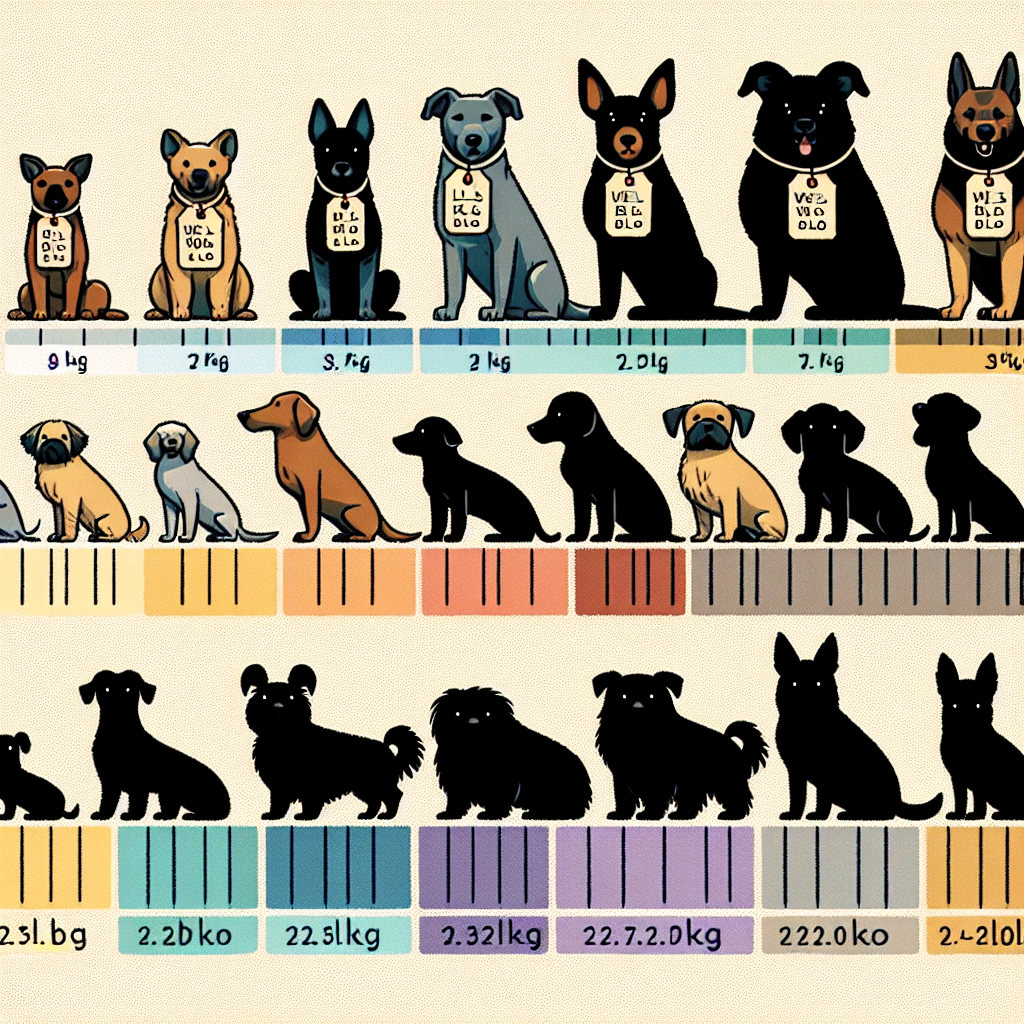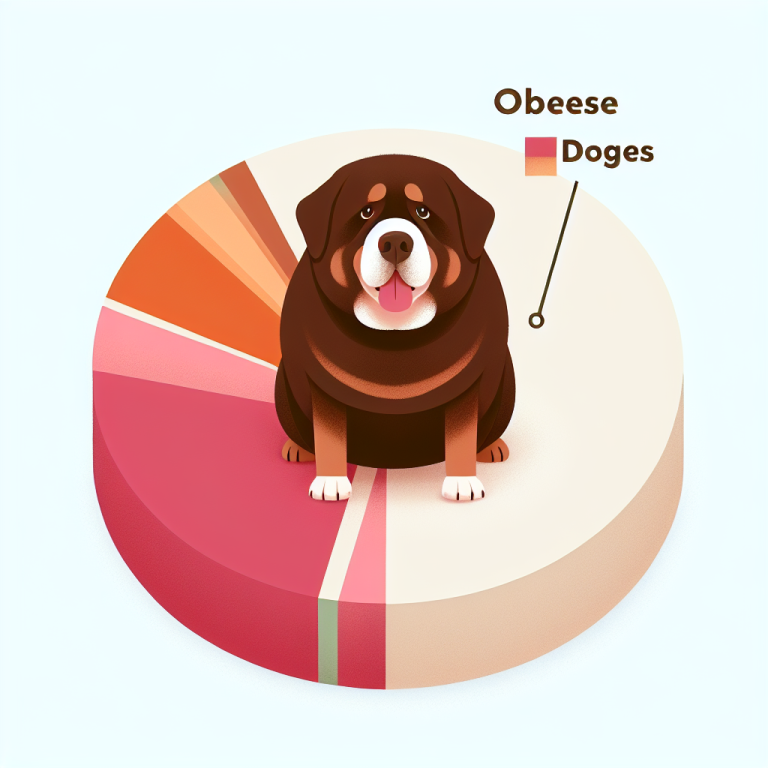Popular Dog Breeds and Their Average Weight Discrepancies
Dog breeds come in all shapes and sizes, each with their own unique characteristics and traits. One important aspect of a dog’s health is its weight, as being under or overweight can lead to various health issues. It is essential for dog owners to be aware of their pet’s ideal weight range and to monitor it regularly to ensure their furry friend stays healthy and happy.
One popular breed known for its large size is the Labrador Retriever. These friendly and outgoing dogs typically weigh between 55-80 pounds for females and 65-90 pounds for males. However, it is not uncommon to see Labradors exceeding these weight ranges, with some individuals weighing over 100 pounds. While a few extra pounds may not seem like a big deal, it can put strain on a dog’s joints and lead to obesity-related health problems.
On the other end of the spectrum, we have smaller breeds like the Chihuahua. These pint-sized pups usually weigh between 2-6 pounds, making them one of the smallest dog breeds in the world. Despite their tiny size, Chihuahuas are known for their big personalities and can be prone to weight gain if not fed a balanced diet and given enough exercise. It is crucial for owners of small breeds to be mindful of their pet’s weight to prevent obesity and its associated health risks.
Another popular breed that often struggles with weight issues is the Dachshund. These long-bodied dogs typically weigh between 16-32 pounds, depending on their size and build. However, Dachshunds are notorious for their love of food and can easily become overweight if their diet is not closely monitored. Extra weight can exacerbate existing back problems in this breed, so it is essential for owners to keep their Dachshund at a healthy weight to prevent further complications.
One breed that is known for its athletic build and agility is the Border Collie. These intelligent and energetic dogs typically weigh between 30-45 pounds, with males being slightly larger than females. Border Collies are highly active and require plenty of exercise to keep them mentally and physically stimulated. Maintaining a healthy weight is crucial for these working dogs to ensure they can perform at their best and avoid any weight-related health issues.
It is important to remember that every dog is unique, and weight ranges can vary within each breed. Factors such as age, activity level, and metabolism can all influence a dog’s weight, so it is essential to consult with a veterinarian to determine the ideal weight range for your specific pet. Regular exercise, a balanced diet, and portion control are key components of maintaining a healthy weight for your furry companion.
In conclusion, being aware of your dog’s ideal weight range and monitoring it regularly is crucial for their overall health and well-being. By understanding the typical weight ranges for popular dog breeds and being proactive in managing your pet’s weight, you can help them live a long and healthy life. Remember, a healthy weight is a happy weight for your four-legged friend.
Understanding the Ideal Weight for Different Dog Breeds

When it comes to our furry companions, ensuring they maintain a healthy weight is crucial for their overall well-being. Just like humans, dogs come in all shapes and sizes, with different breeds having varying ideal weights. Understanding the ideal weight for your dog’s breed is essential in helping them live a long and healthy life.
One common mistake that many dog owners make is not being aware of what their dog’s ideal weight should be. This can lead to overfeeding or underfeeding, both of which can have negative consequences on your dog’s health. To determine your dog’s ideal weight, it is important to consider their breed, age, and activity level.
Different dog breeds have different ideal weights based on their size and build. For example, a Chihuahua will have a much lower ideal weight than a Great Dane due to their significant size difference. It is essential to research your dog’s breed to understand what their typical weight range should be.
In addition to breed, age is another factor that can impact a dog’s ideal weight. Puppies will naturally weigh less than adult dogs, and their weight will increase as they grow. It is important to monitor your puppy’s weight to ensure they are growing at a healthy rate. On the other hand, senior dogs may need to have their weight monitored more closely as they may be less active and prone to weight gain.
Activity level is also a crucial factor in determining a dog’s ideal weight. Dogs that are more active will require more calories to maintain their weight, while less active dogs may need fewer calories to prevent weight gain. It is important to adjust your dog’s diet based on their activity level to ensure they are getting the right amount of nutrients without overfeeding.
When determining your dog’s ideal weight, it is essential to consult with your veterinarian. They can provide guidance on what your dog’s ideal weight should be based on their breed, age, and activity level. Your vet can also help you create a diet and exercise plan to help your dog reach and maintain their ideal weight.
It is important to remember that every dog is unique, and their ideal weight may vary slightly from the typical weight range for their breed. Factors such as genetics, metabolism, and overall health can all play a role in determining your dog’s ideal weight. Regular check-ups with your veterinarian can help ensure that your dog is maintaining a healthy weight.
In conclusion, understanding the ideal weight for your dog’s breed is essential in helping them live a long and healthy life. Factors such as breed, age, and activity level all play a role in determining your dog’s ideal weight. Consulting with your veterinarian and monitoring your dog’s weight regularly can help ensure that they are maintaining a healthy weight. By taking the time to understand your dog’s ideal weight, you can help them live a happy and healthy life.
How to Help Your Dog Maintain a Healthy Weight for Their Breed
Dogs come in all shapes and sizes, each breed with its own unique characteristics and traits. One important aspect of a dog’s health is maintaining a healthy weight. Just like humans, dogs can suffer from obesity and its associated health problems if they are not at a healthy weight for their breed. In this article, we will discuss the typical weight ranges for various dog breeds and how you can help your furry friend maintain a healthy weight.
It is important to note that every dog is an individual, and there can be variations in weight even within the same breed. However, there are general guidelines for the typical weight ranges for different dog breeds. For example, small breeds such as Chihuahuas typically weigh between 2-6 pounds, while larger breeds like Great Danes can weigh anywhere from 100-200 pounds. It is important to consult with your veterinarian to determine the ideal weight range for your specific dog breed.
Once you have determined the suggested weight range for your dog’s breed, it is important to monitor their weight regularly. This can be done by weighing your dog at home or by visiting your veterinarian for regular check-ups. If you notice that your dog is gaining or losing weight outside of the suggested range, it is important to take action to help them maintain a healthy weight.
One way to help your dog maintain a healthy weight is by providing them with a balanced diet. This means feeding them the appropriate amount of high-quality dog food for their breed and size. It is important to avoid overfeeding your dog, as this can lead to weight gain and obesity. Additionally, you should avoid feeding your dog table scraps or human food, as these can be high in calories and unhealthy for your furry friend.
In addition to providing your dog with a balanced diet, regular exercise is also important for helping them maintain a healthy weight. Different breeds have different exercise needs, so it is important to tailor your dog’s exercise routine to their specific breed and size. For example, high-energy breeds like Border Collies may require more exercise than low-energy breeds like Bulldogs. Regular walks, playtime, and interactive toys can all help keep your dog active and healthy.
If you are concerned about your dog’s weight, it is important to consult with your veterinarian. They can help you determine the ideal weight range for your dog’s breed and provide guidance on how to help them maintain a healthy weight. Your veterinarian may also recommend a specific diet or exercise plan for your dog based on their individual needs.
In conclusion, maintaining a healthy weight is important for your dog’s overall health and well-being. By monitoring your dog’s weight, providing them with a balanced diet, and regular exercise, you can help them stay at a healthy weight for their breed. If you have any concerns about your dog’s weight, be sure to consult with your veterinarian for guidance and support. Your furry friend will thank you for helping them live a long and healthy life.






Test comment